Snowy owl makes rare appearance in Orange County, perches on Cypress roof
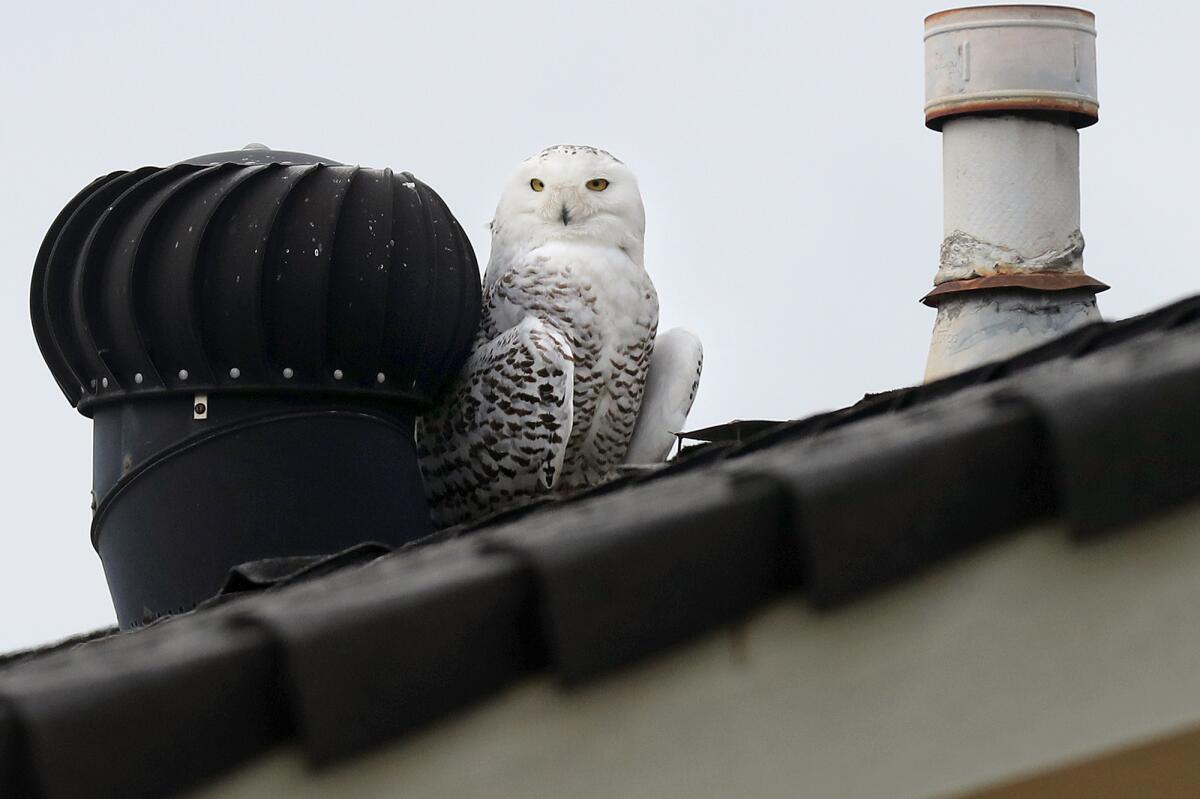
When a friend told biologist Bettina Eastman Wednesday that a snowy owl had been spotted in Cypress, she immediately drove up from her home in Huntington Beach. Dozens of people had already gathered outside the house attached to the eggshell-painted chimney the bird was perched on by the time she arrived, some with telescopes or long camera lenses.
“The person who lived there really was a good sport about all these people showing in front of his house. They are from way, way up there, and are known to winter in the continental U.S.,” Eastman said of the birds. “But normally I’d have to go out to a snowy field in Minnesota or something if I wanted to see one.”
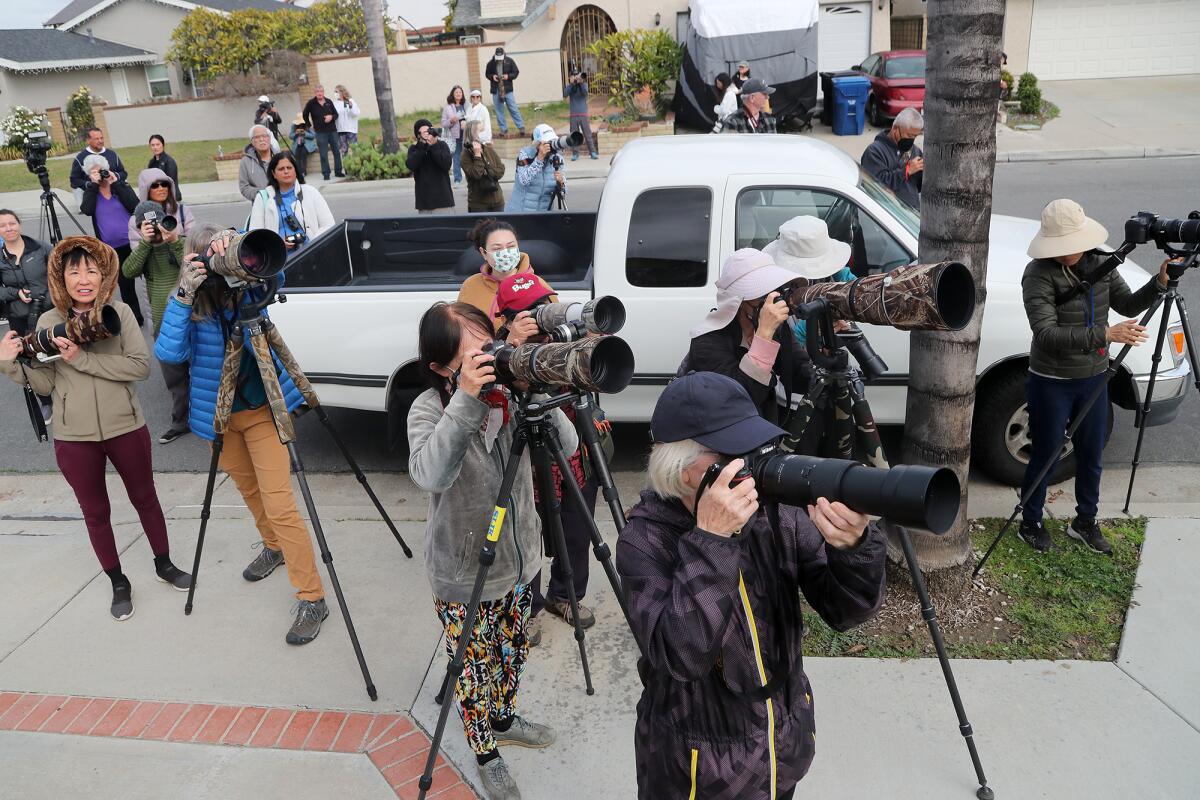
Snowy owls have short, curved beaks and large amber eyes on a swiveling head, with plumage that is bleach white with brown spots. That helps them blend into the frost-covered environments of the arctic circle where they gather to mate during warmer months. But the camouflage of the bird seen in Orange County failed to disguise it from curious birders or local wildlife.
“While I was there, a cooper’s hawk started dive-bombing it,” Eastman said. “That somehow drew the attention of some crows that started dive-bombing the cooper’s hawk, and they eventually chased it away.”
Birdwatcher and photographer Dee Dee Gollwitzer is a volunteer for the California Department of Fish and Wildlife who has been monitoring the snowy owl since Tuesday. Gollwitzer said that hawk had been pestering it for a few days. But local crows have repeatedly swooped in to fend it off while acting mostly indifferent toward the bird, almost as if they weren’t sure what to make of their visitor from the north, she said.
Otherwise, the snowy owl appears to be healthy and thriving, according to Gollwitzer. She said it “looks strong” when it takes off shortly before sunset each evening, and returns from its hunt with a full belly. It might be finding prey near the Naval Weapons Station in Seal Beach or nearby golf courses.
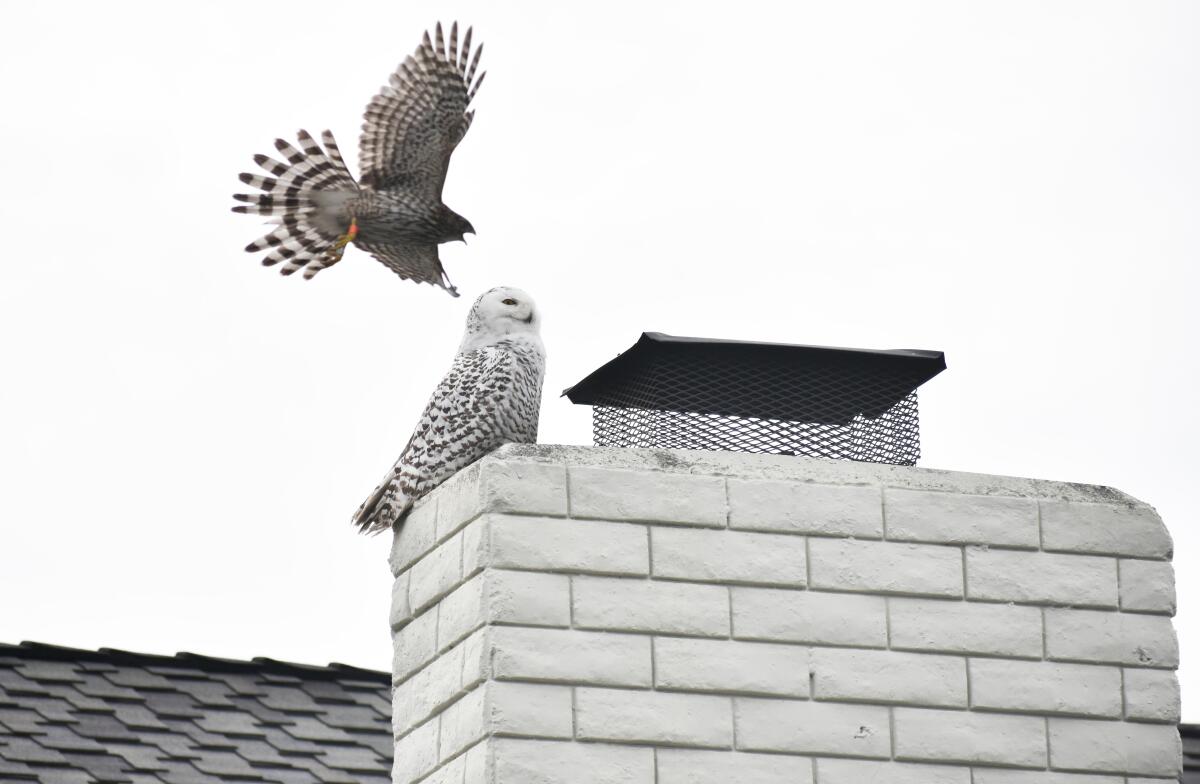
The owl seen in Cypress is likely a younger bird that doesn’t have much experience migrating south for the winter, Eastman and Gollwitzer said. They typically travel from the north pole down to Canada, occasionally dipping into northern California, Mara Salisbury, senior restoration program coordinator for the Bolsa Chica Conservancy, said.
“It’s not unheard of for a migratory bird to become turned around or blown off-course,” Salisbury wrote in an email Thursday. “Most of the northwest U.S. did just experience a blizzard/storm this past weekend, so there’s a possibility it could have followed the cold front down, though our team is leaning more towards a captive escape/release.”
Other bird watchers in Orange County also suspect the snowy owl may have been released by someone in the United States. The species is prohibited for sale or capture in the country by the Migratory Bird Treaty Act.
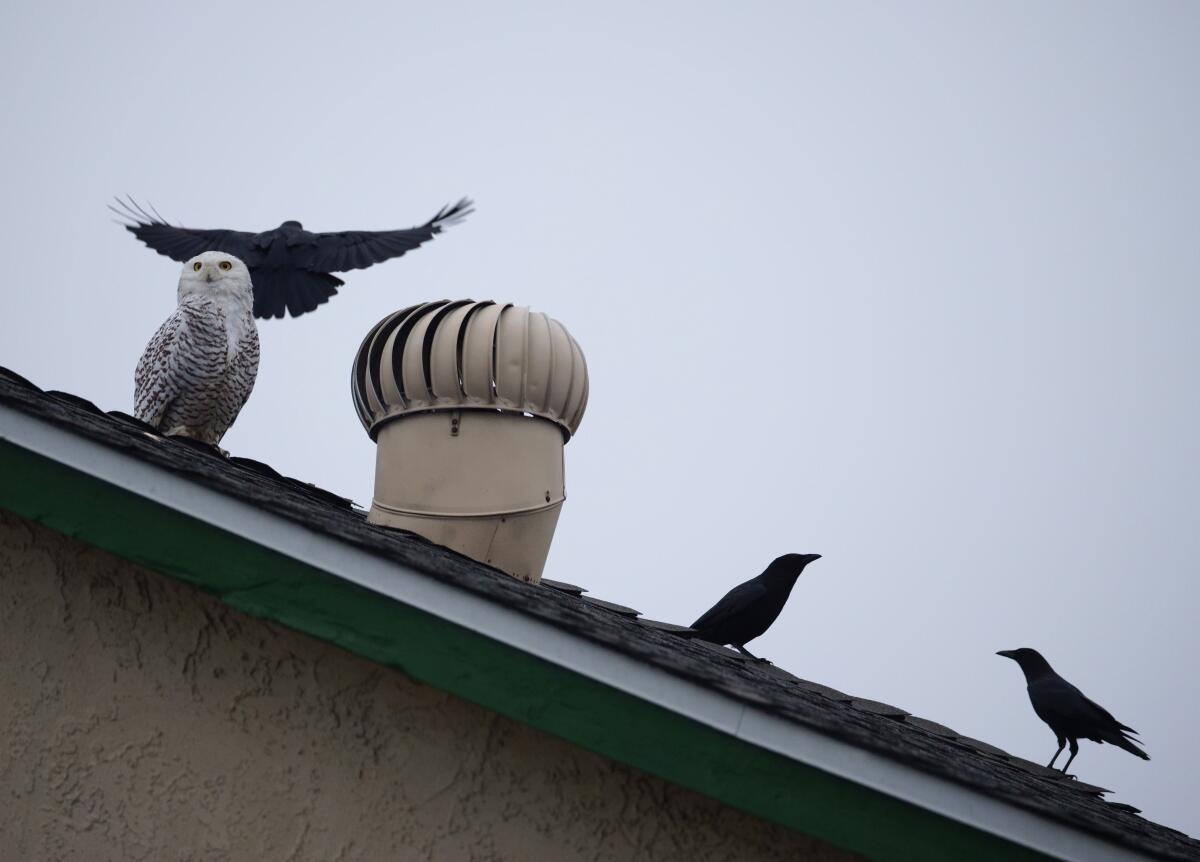
Or, it may have accidentally stowed away on a shipping vessel that took it far south of its normal wintering grounds. That might explain why a snowy owl, likely the same one perched in Cypress this week, was also seen in the port city of San Pedro in mid-November, Eastman said.
“I can’t imagine there being two snowy owls in Southern California and people not knowing about it,” Eastman said.
Eastman and Gollwitzer said it’s impossible to know for sure how arctic wildlife wound up in Orange County. There have been 46 recorded sightings in the northern part of the state, but anecdotal accounts from this far south, including one from Nevada in 1918, are unreliable, so it’s difficult to say whether a snowy owl has ever been in this portion of the country, Eastman said.

Gollwitzer was uncertain whether the snowy owl would be able to fly all the way up from the American southwest and through Canada to get to its typical habitat for the spring. She said the state’s Department of Fish and Wildlife was monitoring the situation. She noted that a rare peregrine falcon found in Orange County about 10 years ago was captured and released it in Oregon but wound up traveling back to Southern California.
Eastman was more optimistic about the owl’s chances of making it to the North Pole on its own. She noted that they have been seen as far as south as the St. George Islands on the west coast of Florida.
Snowy owls usually migrate north in April or May. Eastman said. They hope the Cypress visitor continues to remain in a habitat it can thrive in, whether in Orange County or elsewhere.
“I think it’s here because it’s safe,” Gollwitzer said.
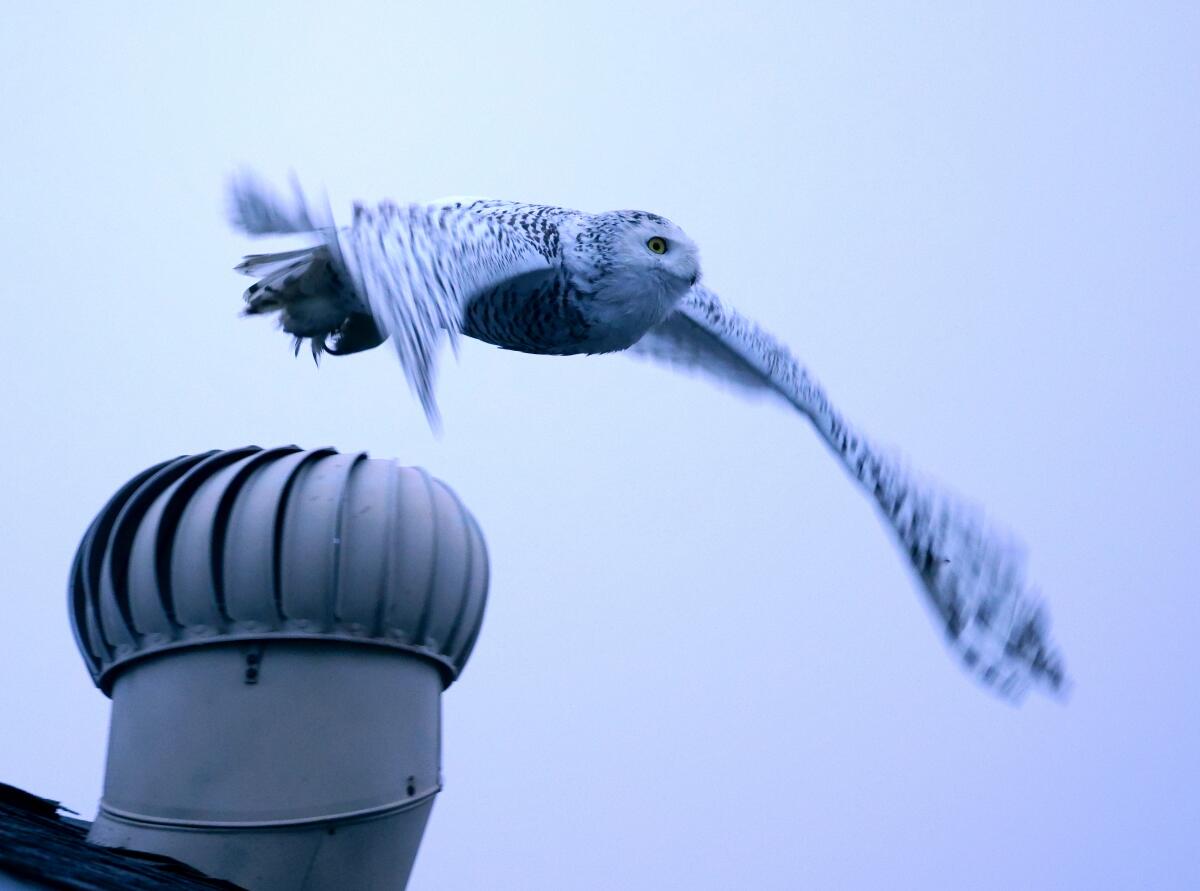
All the latest on Orange County from Orange County.
Get our free TimesOC newsletter.
You may occasionally receive promotional content from the Daily Pilot.




